One of the major issues with first-time novels is that the young writer fails to understand what a novel really is. All great stories are about one thing and one thing only—PROBLEMS. More specifically? Every good story has one core problem in need of being resolved. Granted, there will be many other problems along the way, but they are the setbacks and are all related to solving the core problem.
The trouble is that many of us got our “author training” in school, which really is no training at all. That purple prose that scored us an A on our college short story won’t get us far in the world of commercial storytelling. Additionally, pretty prose might be fine for keeping a five page or ten page short story interesting, but it falls apart under a body as weighty as a novel.
The new writer often senses this, so will work in navel-gazing and inner demons and then random bits of stuff going wrong and, instead of a well-structured story where tension and drama flow organically? We end up with melodrama.
Our “novel” then devolves into Days of Our Lives where nothing is really happening. Conflict is manufactured instead of inherent. “Bad stuff” is happening because the writer needs it to, not because “bad stuff” was inevitable.
How do we fix this?
Antagonists
The antagonist is a highly confusing topic. Hell, it confused me for years which is why I came up with my own term, which we will discuss today. Remember we said every story must have a core story problem?
That core story problem is created by the antagonist.
Conflict is the core ingredient to fiction, even literary fiction. Conflict in any novel can have many faces and often you will hear this referred to as the antagonist. The antagonist is absolutely essential for fiction. He/she/it is the engine of your story. No engine, and no forward momentum.
Like cars, plots need momentum or they are dead. The antagonist provides the energy to move the story forward. Yet, the antagonist has many, many faces and that is what trips up most new writers.
Think of your antagonist like ice cream–infinite colors, flavors, and complexities. The antagonist is not always evil. Yes villains are always antagonists but antagonists are not always villains.
Villains are only a flavor of antagonist, much like chocolate is only one flavor of ice cream. And, even in chocolate, there are still limitless varieties. Guess what? Same with villains. We’ll talk about them later.
This series is to explore the many facets of the most important element in fiction. Today, we are going to begin with what I call the BBT–or Big Boss Troublemaker. Why? Because the term antagonist confused the hell out of me for years, so I simplified things.
No BBT and you have no story. The BBT is not always bad or evil. The BBT simply creates the core story problem in need of being resolved.
Your opposition is the most important ingredient for a great story readers will love.
The Big Boss Troublemaker is whoever or whatever causes the protagonist’s world to turn upside down. The BBT creates the core story problem. The BBT is also who or what must be present at the Big Boss Battle (Act Three).
The lead up to the show-down with the BBT is responsible for creating our story tension. Will the protagonist evolve and triumph, or will he fail?
In commercial fiction, it is generally easier to spot the BBT.
No Sauron and no need for the Hobbits to leave the Shire.
No Darth Vader, no reason for Luke to leave Tatooine.
No Buffalo Bill, and Agent Starling is left doing paperwork.
This might seem simple enough, but time after time I get new manuscripts where there is no core story because there is no BBT. I get fantasy or science fiction manuscripts with a lot of fancy world-building and magic and bad stuff happening, but no core party responsible for a singular problem….so it all just fizzles.
Even in more literary works there is also a BBT and that BBT must have a face despite all we heard about man versus man, man versus religion, man versus nature, man versus society, etc. in school.
When the BBT is not corporeal? This is when things get tricky. Humans don’t do so great with existentialism, which is why we then need the proxy.
Let’s explore these.
Man Against Society
Whatever larger idea your protagonist is battling, that idea will need a manifestation. For instance, in The Hunger Games trilogy, “the system” is represented by Snow. The story is not over until Snow is defeated and his defeat marks the system’s defeat.
In The Help, the BBT is racism, but it is manifested in the white socialites who mistreat the maids (I.e. Hilly Holbrook). “Racism” is defeated when the socialites are defeated.
Man Against Nature
Some new writers take this as man fighting bad weather, but really? Who wants to read about bad weather for 300 pages? Often these stories are not about the weather at all, but rather what the weather reveals in people.
For instance, In The Perfect Storm, was the storm really the BBT? Or was it merely the impetus that brought forth the real BBT…pride which was manifested in the captain, Billy Tyne?
The fishermen are suffering. They are on the verge of losing homes and marriages because of their dire economic situation. The captain decides to do one final fishing voyage even though it is the most dangerous time of the year. When the fisherman go out, they land the catch of a lifetime, but the refrigeration system breaks.
They are faced with a choice. Let the fish rot and then it was all for nothing. Or they can risk everything and take on the perfect storm (pride).
In my POV, the story is never man against nature, it is man against himself and nature is simply the catalyst.
Man Against Himself
No one wants to read a book of nonstop navel gazing. Thus if your character’s worst enemy is himself/herself? You need a proxy. The BBT will represent the particular aspect you are seeking to destroy and then the BBT will have a face.
For instance, in the movie 28 Days, the BBT is alcoholism, but it is represented in the proxy Jasper, the hard-partying boyfriend who fuels and normalizes Gwen’s addiction.
Gwen is her own worst enemy. She must defeat her own alcoholism. But this will be manifested when she can finally see herself as an addict and walk away from the life of addiction (where Jasper is its representative).
We could go on forever on this topic, but we won’t. Just pay attention to your favorite stories and see if you can pinpoint the BBT and then notice how it is always the protagonist-turned-hero who will face off with him/her/it at the end.
Some Pretty Hard and Fast BBT Rules—Break these Rules at Your Own Risk
Rule #1—BBT (or a proxy of the BBT) MUST be introduced in Act I. No leading us on for 50 pages before we get an introduction. BBT is responsible for Inciting Incident.
Rule #2—In ROMANCE, the love interest cannot be the BBT. Romance has rules and this is a big one. Now, in romance, the love interest will take on the role of antagonist in scenes, but they cannot be the BBT. Why? Because the BBT must be defeated in the Big Boss Battle, and utter defeat isn’t exactly grounds for a lasting relationship. Romance is all about the HEA (happily ever after)
Feel free to break this rule, but I will warn you that when the BBT is the love interest, it is no longer a romance. It becomes Women’s Fiction 😉 .
Rule #3–BBT MUST be defeated in your book. Period.
There has to be a Big Boss Battle in your story or the story problem is not fully resolved. A lot of new writers are “writing a series.” And, oh, but Such-and-Such dies in book 12 of my series. Nope. Sorry. Try again.
There are two types of series. One type is connected only because of the protagonist. Detective books for instance (I.e. Harry Bosch books). In these it is pretty easy to see that the BBT must be defeated in each book.
The second type of series is connected through a singular story, but the thing is, each book will have a mini-BBT that marks the culmination of that part of the story. So I get it, your “Sauron” is not defeated in Book One, but that doesn’t absolve you of the Big Boss Battle for that book.
(Book I) BBT–> (Book II) BIGGER BBT–> (Book III) EVEN BIGGER BBT—> (Book IV) HOLY MOLY! AN EVEN BIGGER BBT!!!!
In the Lord of the Rings film trilogy, each movie had it’s own BBT. In The Fellowship of the Ring, the movie wasn’t over until the showdown against the Uruk-Hai who is actually a minion of Saruman (The Two Towers) who is a minion of the Big Guy, himself…Sauron (defeated in The Return of the King). Each movie has a Big Boss Battle against that movie’s BBT. If we panned back, each movie would make up one Act of a larger 3 Act whole.
Okay, well that’s enough for today. Need to stop before your brains all explode and then you have to clean up your keyboard. The antagonist is tough, and hopefully this series will break its complex nature down in to bite-size, manageable pieces.
I LOVE hearing from you! And if you want me to look at your writing, make sure you check out my Hooked class. I am offering levels that come with edits from MOI! *smooch* And I only do this class a couple times a year so sign up and get your spot.
****The site is new, and I am sorry you have to enter your information all over again to comment, but I am still working out the kinks. Also your comment won’t appear until I approve it, so don’t fret if it doesn’t appear right away.
Also know I love suggestions! After almost 1,100 blog posts? I dig inspiration. So what would you like me to blog about?
Talk to me!
And to prove it and show my love, for the month of MARCH, everyone who leaves a comment I will put your name in a hat. If you comment and link back to my blog on your blog, you get your name in the hat twice. What do you win? The unvarnished truth from yours truly.
I will pick a winner once a month and it will be a critique of the first 20 pages of your novel, or your query letter, or your synopsis (5 pages or less).
February’s winner of the 20 page critique is Dominic Scezki. Congratulations! Please send your 5000 word WORD document (12 point, Times New Roman, one-inch borders, double-spaced) to kristen at wana intl.com.
SIGN UP NOW FOR UPCOMING CLASSES!!!
Remember that ALL CLASSES come with a FREE RECORDING so you can listen over and over. So even if you can’t make it in person? No excuses! All you need is an internet connection!

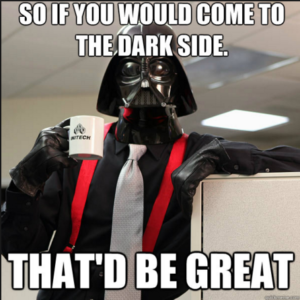
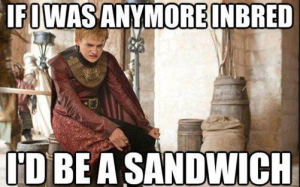
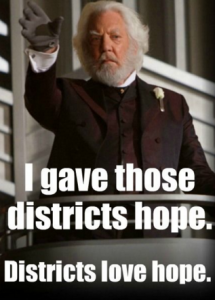
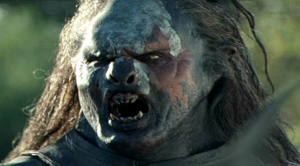



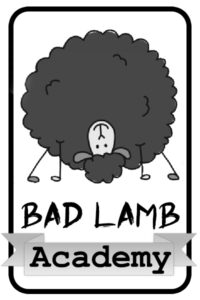
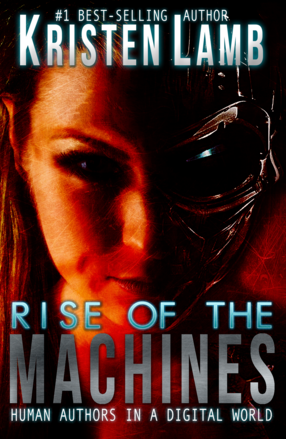


36 comments
9 pings
Skip to comment form
Practical scene set up question: in my outline, all we know about the BBT is from the main characters’ POV and experiences. I have no scenes that focus on the BBT/his POV or world. In other words, he is the cause of the inciting incident and subsequent troubles, but we don’t see him until the end. Is that okay? Should I attempt to include scenes that actually show the BBT, or are the consequences of his choices and desires sufficient?
Thank you in advance for any feedback!
Author
You don’t need the BBT’s POV. How the BBT is introduced is we encounter the BBT’s agenda. For instance in a murder mystery, the BBT is obviously the killer. The BBT is introduced via the discovery of a victim. When we run into the plot problem, that is the face of the BBT. That help?
Yes! I feel better now. Thank you!
When you cut the antagonist into bite-size pieces, do you serve it steamed or fried?
Why did this post make me think of you in your Viking hat? :o)))
“‘Bad stuff’ is happening because the writer needs it to, not because ‘bad stuff’ was inevitable.”
Yes! Yes! It took me way longer than it should have to really “get” this. (And because of you, I might add).
Thanks for a fab post, Kristen! You are really making a positive difference for us baby writers. 😀
In the book, “A Gentleman in Moscow,” the catalyst for the story is communism, while the proxy was an incompetent who was loyal to the party. In this case, the BBT is communism, but the main proxy wasn’t responsible for the inciting incident. There was another minor proxy at the beginning of the book that provided the inciting incident, but the BBT through out the whole book was communism. BTW, I really liked that the main proxy was introduced early on as a minor character and a slight annoyance. For me, that added significantly to the story.
I’m doing the same thing with my current WIP because it’s not realistic for the BBT proxy to create the inciting incident, but it is evident that the one creating the inciting incident and the main antagonist are cut from the same cloth.
In my current WIP, the antagonist is my protagonist’s mother. Other bad things happen to my protag, but without the mother, none of it happens and none of it continues.
The BBT isn’t always noticeable as the BBT because of the multi-facets of the character. But as you continue to read, you begin to realize he’s been idealized in the main character’s mind and she’s beginning to figure out (as is everyone around her) that he’s a jerk and really not a nice person at all.
At least that’s how mine has been. My sister called me after reading book 2 and said “What the hell happened? I thought he was a good guy and …now he’s a bastard!”
I smiled. Obviously she missed a few of the signs that he wasn’t the nice guy.
(and yes, it’s a series, and yes, he’s worse in book 4 than he was in book 3 and back.)
Thanks for a fabulous post.
I love the post too
My new series features a team of BBTs. Should I feature just one in a book or is two acceptable, the second introduced as a boss or ally of the BBT?
This post really gave me some food for thought as I contemplate my BBT – a member of a non-corporeal species who has taken on human form to better interact with the species being studied.
Since I’m still in the early stages of planning, I’m going to be able to put a lot of this to use, right away, so thank you!
BTW, I love the new look, and since I (finally!) have a website, I don’t mind at all putting my info in again!
Great points – but I do want to say that (using the LORT films in your example) the Uruk-Hai weren’t defeated in the Fellowship of the Ring – some were killed, but not all (there were a bunch of them). The rest had run off (before Aragorn showed up) with Pippin and Merry. Yet, this still worked. So, does that mean the BBT has to be defeated, or does it count because they took the wrong hobbits?
Author
The main BIG Uruk-Hai was killed and thus acted as a representative. They still had to pass this threshold to make it to the next layer of story. In a series, each BBT is like checking off a Things To Do List. Make sense?
I’m now counting pages in my head. When did I introduce my BBt, actually a surrogate, in my last book. First scene, I think. One more note before I look at that first draft again.
Best post I’ve read on the antagonist, and one of your best posts ever! Thanks for this – I’ll be using it. Hope you don’t mind me linking from my blog!
Author
Not at all! I encourage it. If you look at my contest you get additional entries for linking to me 😀 .
Good stuff! You explain it all very clearly.
Just discovered your blog and am finding it so helpful. I am working on a series, and the Biggest Bad (so to speak),doesn’t get beaten until the end.
But thinking through the first book, the antagonist (if I can use that word as it fits the situation) is not a “villian” or a “big bad” but a rather appealing character who non-the-less opposes the protagonists aims and must therefore be defeated. Can that work?
Really loved your article and the concept of BBT. Looking for the next installment.
You are awesome as always. No matter how often you say it, I need to hear it. Thank you.
Great coaching Kristen. Thank you as always for your wisdom and prompting me to think at a deeper level.
In my alternate world adventure, I hadn’t realized that I had no antagonist. But as I think about it, I realize that perhaps the greedy, manipulative, lying Minister of Space fills that roll. Because he rushed to put together a team to explore the new world, they were ill-equipped and are now six months overdue to return to Earth. With some development, would the Minister of Space be a believable (I say with tongue in cheek) antagonist?
Your point about proxies is well made. It makes me wonder to what extent all character based antagonists are really proxies or symbols of a larger problem.
Another interesting topic is how the protagonist and BBT oppose each other. Some stories pit them against each other in a direct, head to head conflict, while others, particularly political narratives, may keep the two far apart, their conflict rooted in the choices they make and the forces they wield.
I’m not sure I agree with the idea that the BBT must be defeated.
For example, many tragedies see the protagonist defeated and sometimes even broken by the BBT.
Author
LOL. Well, we are talking commercial fiction, not French films. But to truly be story the protagonist still must triumph against the BBT in some way. For instance in “The Road” the Man dies, but he dies on his own terms. The BBT is the Animal State. In a world where there is no food, how long until humans resort to feeding on other humans, thus losing what remains of their humanity? In the end the world is not fixed, the remaining humans unchanged, but the hero dies having not given in to his base needs and thus carries the torch of humanity even into death.
Thanks for this series Kristen. The antagonist certainly is a confusing topic. I appreciate the way in which you explain it which makes a lot more sense.
What a crisp, clear explanation. Thanks for this guidance.
Thank you for this post, Kristen. It’s going to take a lot of practice to grasp this concept. “Big Boss Troublemaker” is a cool term and makes it easier to understand.
I’m new to your blog and am so excited to have found it! What a fantastic (and timely, at least for me) post. I’ve been struggling to clearly define my antagonist in my current WIP and your BBT concept is such a fresh new way to look at it! I must now go clean my brains off my keyboard…
Author
LOL, RIGHT? So happy to have you!
Very helpful, I have a tendency to make my protagonist too good often winning through dumb luck. With a stronger BBT, he/she would have work harder. My series BBT is similar to Star Wars Dark force, so I now need to strengthen the dark minions/proxy.
Thanks for your insights on this, especially your explanation of abstract antagonistic forces needing a proxy. It is so easy to get lost in the circle of “who/what is my antagonist” when the story doesn’t have an obvious villain.
This is a good post but I’m still not sure I have made the BBT clear. As a first time novel writer I now think maybe I have 2 of them. Proxy and protagonist who needs to overcome shame!
I really appreciate this post. I think this is what was missing from my short story. I’ve been stuck and couldn’t figure out why, what was missing? My story has a core problem. I think it’d fit under Man versus Society, but there is no physical manifestation or BBT. I’ll brainstorm and rewrite it and hopefully this’ll be that missing link. Thanks so much!
What I like is when the antagonist is actually the good guy, like Porfiroy from Crime and Punishment.
God, I hope I’m wrong and not seeing what I think I’m seeing. Otherwise, I don’t know what to do now.
The Big Boss Troublemaker is whoever or whatever causes the protagonist’s world to turn upside down. The BBT creates the core story problem. The BBT is also who or what must be present at the Big Boss Battle (Act Three). (!!)
Crudddd. Merryn the main pov did this. Maxwell simply became furious at her for what happened after. >_< She stole the book, she freed the god, she blew up the city, not Maxwell.
I get fantasy or science fiction manuscripts with a lot of fancy world-building and magic and bad stuff happening, but no core party responsible for a singular problem….so it all just fizzles. Urr, how about when the protagonist did it? But is trying to fix it? (well right now fixing isn't an option it's more running. It's being worked on, chapters are getting deleted.)
Rule #1—BBT (or a proxy of the BBT) MUST be introduced in Act I. No leading us on for 50 pages before we get an introduction. BBT is responsible for Inciting Incident. HAHA- Merryn. Is she the 'bad guy'. O.o
Maybe I'm just confused again. Hope so. @_@
[…] The Engine of Fiction—Meet the Antagonist […]
[…] and that is the lack of the CORE STORY PROBLEM. In order to make things simpler, I came up with the concept of the BBT (Big Boss Troublemaker) because the core antagonist is not always a villain. He/She/It merely has a goal that runs counter […]
[…] The Engine of Fiction—Meet the Antagonist […]
[…] we have been talking about creating a CORE STORY PROBLEM for our novel. This means there is ONE protagonist. When I get manuscripts where a bunch of stuff is […]
[…] Kristen Lamb’s post on the antagonist is going to help me plenty. She adds a perspective that cleared some of my confusion and apprehension. The Engine of Fiction—Meet the Antagonist […]
[…] The trouble is that many of us got our “author training” in school, which really is no training at all. That purple prose that scored us an A on our college short story won’t get us far in the world of commercial storytelling. Additionally,… – READ MORE […]
[…] about Superheroes Aliens Robots Zombies. If Kristen Lamb’s said it once, she’s said it a thousand times: using the climax of Book One as the hook for Book Two is […]
[…] MEET THE ANTAGONIST – HOW TO WRITE A BAD GUY BY: KRISTEN LAMB […]
[…] The Engine of Fiction—Meet the Antagonist […]